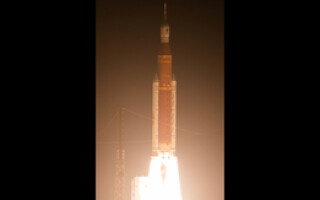Space-ready electronics riding NASA's unmanned Artemis I mission
NewsNovember 17, 2022

NASA KENNEDY SPACE CENTER, CAPE CANAVERAL, Fla. The launch of the unmanned Artemis I mission, NASA’s first step in returning to the moon, is carrying a host of critical components that power the flight computers, flight-control systems, and payloads on both the Space Launch System (SLS) and the Orion spacecraft. NASA successfully launched the Artemis I from Kennedy Space Center on Wednesday, November 16.
Among a myriad of suppliers and equipment aboard the mission is semiconductor maker Renesas Electronics, which reports that hundreds of its radiation-hardened (rad-hard) integrated circuits (ICs) are aboard the mission, as part of the battery-management systems, engine control electronics, main flight computer and controller board for the Orion capsule, and power-distribution system.
Another manufacturer with equipment aboard the mission is Curtiss-Wright, which reports that it is participating in the Artemis I mission with data acquisition and encoding units located on the rocket boosters, core stage, upper stage, and crew module that are designed to capture critical test flight data.
Electronics maker CAES reports that some of its parts aboard the Artemis I mission include rugged cable assemblies; its SRAM, logic, low-voltage differential signaling, clock and NOR flash devices; and its LEON3FT microprocessor, which is both on the main mission and also on six of the 10 CubeSats that launched with Artemis I. The CubeSat missions -- which were ejected from the rocket's second stage after the trans-lunar injection burn following launch -- are set to fly to various destinations including the moon, asteroids, and interplanetary space to study such aspects of space as navigation techniques, radiation, and biology, according to a NASA statement. One CubeSat, NASA says, is even planned to conduct a soft landing on the lunar surface.









